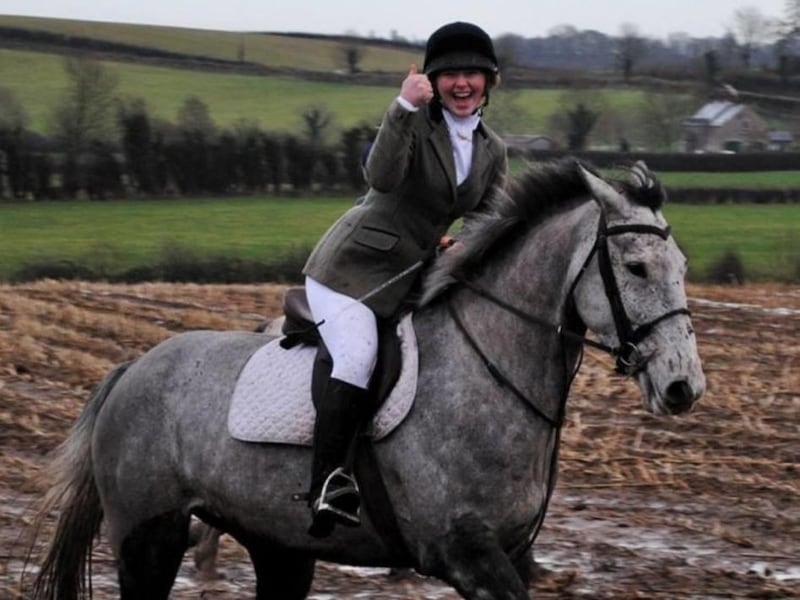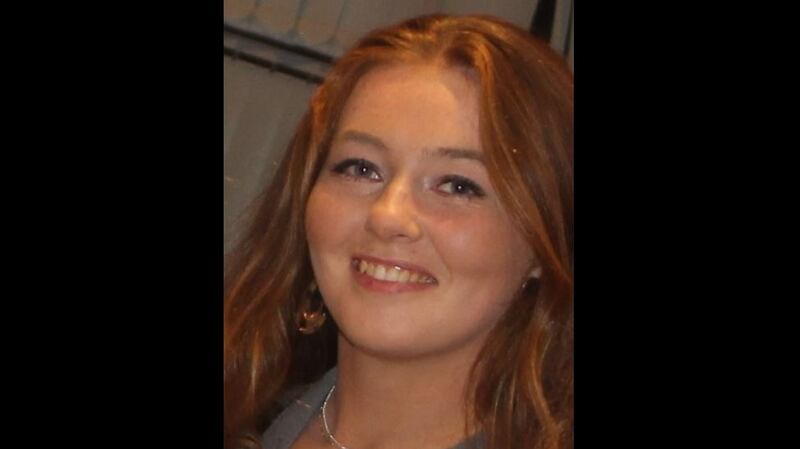Katie Simpson was, says everyone who knew her, unique. A gifted equestrian and a natural in the saddle, she could handle even the most headstrong horse – not by force or aggression, but gentle persuasion and trust.
Her friends – including her longest and closest from the age of four – remember her mischievous and infectious laugh; how bright she was; how she had always dreamed of being a jockey.
But from not long after Jonathan Creswell came into her life, Simpson was masking a life of pain.
By August 2020, Katie Simpson was dead at the age of 21, raped and murdered at her home. The man accused of those crimes, 36-year-old Creswell, was found dead at his bail address on the second day of his trial last April.
Mark O'Connell: In The Settlers, Louis Theroux does something we have rarely seen him do in 30 years of TV
Liz Carolan: ‘Tariffs’ is about to become the excuse for absolutely everything we don’t like
Mysterious sweathouses were used widely in Ireland until 19th century. Now sauna culture is making a comeback
The Pitt could land in Ireland next year. What is taking so long?
Last week, three women were each given suspended sentences for “a conspiracy of silence” in covering up for Creswell: Hayley Robb for withholding information and perverting the course of justice; Jill Robinson for perverting the course of justice; and Rose de Montmorency-Wright for withholding information.
The picture that has emerged since is of a man who was physically, emotionally and sexually abusive and controlling, with Katie Simpson bearing the brunt.

Ten years before her violent death, Creswell had been jailed for six months for violence towards his previous girlfriend, Abi Lyle.
In 2008, Creswell – a fledgling jockey originally from Derry – began a relationship with Lyle, who was also heavily involved in equestrian life. This relationship became progressively toxic, culminating in a shocking incident in 2009 when Creswell collected Lyle from her Co Down home in a temper. She was unable to escape from the moving vehicle as he subjected her to brutal physical abuse while he drove her in the direction of his home in Caledon. But Creswell drove past his house, crossed the Border and on to a wooded area in Monaghan where he repeatedly punched, kicked and choked Lyle until she passed out. He later imprisoned her in his home for several days and at one point, he threatened to drop her into a bath of bleach. Eventually, Lyle managed to get to a phone and call police.

The cover-up: How Jonathan Creswell tried to get away with murder - Part 1
When arrested, Creswell denied everything before changing his plea when a jury was sworn. He was handed a six-month prison sentence. When he was released in late 2010, a welcome-home party was thrown for him in a local hotel.
Shortly after his arrest Creswell began what was to be a long-term relationship with Christina “Nina” Simpson, Katie’s eldest sister and eventually the mother of his two children. He was, by his own defence team’s definition, “a philanderer”. He had numerous simultaneous relationships – including with Robb, who was one of the three women convicted of withholding information about him attacking Katie.
Robb was involved with him for more than 10 years. Her loyalty – and indeed that of all the women he was associated with – was bizarre and fierce, although they now accept it was misguided.
Katie Simpson first met Creswell at around the age of 10 through her sister. Later, many would describe hearing him use sexually inappropriate language to one so young. As time went on, his controlling behaviour towards her grew. Katie was gradually being drawn more and more away from her friends and education into the lives of Creswell and her sister.
The couple moved to Donegal in 2016 to run stables and 16-year-old Katie was pulled from school and sent to work for them.
At some point Katie sustained a broken back in circumstances which remain unclear. Creswell drove her to hospital and from there she was transferred to the Royal Victoria Hospital for Sick Children. She was eventually sent home to Armagh in a back brace on strict instructions of six months’ rest. Within days, however, Creswell arrived in Armagh and took Katie back to Donegal. Witnesses would later recall seeing the teenager carrying buckets of water in her back brace. Despite some further 18 hospital admissions – all apparently from horse falls – she never complained.

By 2020, Creswell, Christina and their two children were now living in a small terraced house in Derry while setting up their own stables. Katie and de Montmorency-Wright also lived there in what must have been extremely cramped conditions.
On August 2nd, 2020, Katie was permitted a rare night out back home in Armagh with her friends. She stayed at her mother’s where there was a secret meeting with her first boyfriend, Shane McCloskey. They left early the next morning in separate cars. But Creswell found out, and bombarded Simpson with foul, angry messages. When he met her at a showjumping event in Lurgan, he took control of her phone.
Around 6pm Katie was ordered into Creswell’s car and – in a haunting replay of the incident with Lyle – driven first to Strabane, then over the Border into Lifford. After around 90 minutes they returned to the Derry area. Shortly before 1am on August 3rd, 2020, they arrived home.
[ The murder of Katie Simpson: The full storyOpens in new window ]
The details of what occurred from then until the following morning are still largely unknown. At that point, Simpson, in her showjumping shirt and naked from the waist down, was taken into the care of ambulance staff – unresponsive, battered, choked, bleeding and half naked.
Within 24 hours of her admission to hospital, aware of what had happened to Lyle, having covered the case in 2009/10, I contacted police to inform them of Creswell’s past convictions, the domestic violence, his treatment of women and, most significantly, his propensity for strangulation. An assurance was provided that officers would be in touch, but no call came. Nor did any call come following numerous further reports that week, including the day Simpson died and right up to her funeral. Her death was initially treated as a suicide.
Watching the wake and funeral was nothing short of torture for those of us who had been raising concerns. Creswell, loyally flanked by the women in his life throughout, was centre stage as chief mourner.
In December 2020, after repeated unsuccessful attempts to persuade the PSNI to act, I formally asked them why detectives had not been brought in. This would subsequently form the basis of my concerns when I contacted the Police Ombudsman, although making a complaint proved problematic as I wasn’t a relative.
In January 2021 – five months after Katie Simpson died – the case was reopened, a murder inquiry was finally launched and, in March, Creswell as chief suspect was arrested and charged.
The full truth of Katie’s life and death will never be known. Two of the four people who were in the house that night are now dead. What we do know is what Judge Neil Rafferty said at the sentencing of Creswell’s co-accused women: “Katie was cruelly deprived of the bright future she undoubtedly had.”
Equally horrific for her close friends who stoically refused to give up was the fact her death in such appalling circumstances at the hands of a convicted, controlling abuser seemed to have been dismissed so readily by the original investigating team, despite the overwhelming evidence.
The fight continues for answers as to why, in the face of such glaring similarities, this case was not taken seriously, and for the PSNI to carefully examine its approach to violence against women – for all women and for Katie.
Tanya Fowles is a freelance court reporter
- Listen to our Inside Politics Podcast for the latest analysis and chat
- Sign up for push alerts and have the best news, analysis and comment delivered directly to your phone
- Find The Irish Times on WhatsApp and stay up to date














